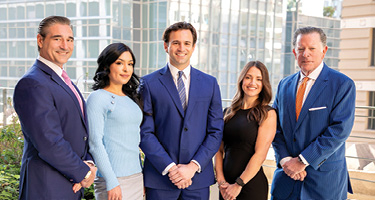Not so long ago, business leaders and news outlets were agog at the idea that a tiny group of partners at elite Wall Street law firms were charging $1,000 or more an hour for their services. Now, hourly rates for second-year associates are reaching that mark, and law firms who can get away with it are asking clients to pay more than $3,000 an hour for top legal talent.
Clients are, by no means, thrilled. Time and again, they say they want law firms to offer more alternative fee agreements, work within budgets and make their billing more transparent.
Are law firms listening? A new survey by Best Law Firms finds that 72% of U.S. law firms are indeed offering alternative fee arrangements (AFAs), and the number rises to 90% among firms with more than 50 lawyers.
Appearances Can Be Deceiving
Yet the data also shows that most firms apply AFAs unevenly, presenting clients with a relatively narrow list of alternative fee options rather than taking a more flexible approach.
At the same time, firms appear incentivized to stick with hourly billing and substantial rate hikes. Rate increases helped spur revenue growth for both large and small firms last year, the Best Law Firms survey found, even as many of the largest players were spending heavily on expensive, AI-related technology upgrades. And the firms surveyed said pricing issues are almost never the most significant factor in winning or retaining a client.
Meanwhile, clients who believe artificial intelligence will be a cost-saving panacea may be disappointed with the early returns. Most firms report that AI has had little effect on billing, and even when it has, firms said they have seen no decrease in billable hours.
AFAs—Within Limits
Best Law Firms surveys thousands of U.S. firms as a component of its annual research and ranking process. Overall, 4,852 firms replied to the survey this year, with respondents ranging in size from solo practices to global mega firms. The firms surveyed employed more than 164,000 lawyers, or roughly 12% of the active attorneys in the United States. The large sample size allows Best Law Firms to capture data on Big Law players and on smaller and midsize firms that rarely appear in industry benchmarking reports.
Eighty-four percent of the respondents answered Best Law Firms’ questions about their billing activities and AFAs. Alternative fee arrangements are most commonly used by the largest firms, the survey shows. While 96% of firms with 150-plus lawyers and 91% of firms with 50 lawyers or more said they offer AFAs, the figures drop to 78% for firms with 20-49 attorneys, 68% at firms of 2-19 lawyers and 70% for solo practitioners.
The Road Is Narrow
When they do offer alternative fees, most firms stick with a fairly limited and unevenly distributed list of familiar options. The most commonly used alternative by far is a flat-fee arrangement, which allows firms to charge a predetermined amount for certain services, particularly routine or standardized matters.
According to the survey, 73% of firms with AFAs offer flat fees—a figure that increased by 5% over last year’s survey. Sixty-seven percent of firms said they use retainers; 62% allow contingency fees; 55% agree to blended hourly rates (where the firm charges a single rate for all of the lawyers working on a matter); and 50% have fixed fee arrangements (firms agree to the price of a specific matter prior to an engagement).
No other arrangements—such as fee caps, volume discounts, or collared fees—topped 50%. The number of firms that said they were using hybrid fees climbed by 20% this year. Still, only one-third of firms with AFAs use them. Hybrid arrangements allow firms to charge billable hours for a portion of their work and an alternative fee (capped, flat, or contingency) for the rest.
Paying the Price
Earlier this year, in its annual report measuring client attitudes, BTI Consulting Group said overall client satisfaction had hit a 25-year low, in part because many firms are “still holding onto legacy models” that do not meet the demands of clients.
In-house counsel “are caught in a squeeze,” facing ever-tighter timelines, increased risk and “relentless pressure” from their CEOs, BTI noted.
In its annual State of the Corporate Legal Department report—a survey of more than 2,400 corporate general counsel released in March—Thomson Reuters also found that GCs are under pressure to create greater value for the company’s dime, or “how do GCs serve the needs of the business in a way that gets the best value for their investment,” Thomson wrote.
All Talk, No Action
While they may complain about the way firms are doing business, very few clients appear to be making decisions regarding their outside counsel based upon pricing issues nor are they punishing firms for rising rates.
Just 1.9% of law firms in the Best Law Firms survey reported that “pricing flexibility” was a strategy that contributed most significantly to client retention or acquisition efforts in the past year. More important, firms said, was “offering superior client service” (56% of firms) or “industry specialization” (33%).
And while artificial intelligence and its potential for reducing client costs has been the subject of countless legal business think pieces in recent years, only 1.1% of firms said “operational efficiency through technology” was contributing significantly to retaining clients or winning new ones.
Growing Revenues
In August, Wells Fargo’s Legal Specialty Group reported that revenues for the 130 firms it surveyed had risen 11.3% for the first half of the year, driven primarily by a 9% jump in rates. And the 2024 Am Law 200 found that Big Law experienced double-digit gains in revenue—a “bang-up year” for firms, Law.com said.
While Big Law’s performance is well-documented, financial returns at firms outside the Am Law 200—in other words, the vast majority of U.S. law firms—can be far more difficult to determine. Best Law Firms’ survey, however, collected basic revenue information from more than 1,700 firms with fewer than 150 lawyers (excluding solo practices).
While not growing as much as the Am Law 200, revenue at smaller and midsize firms increased by a healthy 6.5% last year, Best Law Firms figures showed. That’s an improvement over last year, when firms of the same size saw a 5.1% revenue increase.
Revenue per lawyer, a key benchmarking metric for firms, averaged $578,000 at firms with fewer than 150 lawyers (excluding solos). Solo practitioners reported revenue per lawyer of $571,000.
A Weak Incentive
Such strong revenue performance, driven by hourly rate increases, is hardly an incentive for most law firms to expand their alternative fee usage.
Nor is the fact that many firms—particularly above the 150-lawyer mark—are seeing big increases in operating costs as they invest in artificial intelligence technology.
Firm expenses—excluding salaries—soared by 8.6% in the first half of the year, Wells Fargo said in August.
AI's Limited Impact
While investments in artificial intelligence may lead clients to believe a dramatic change in billing models is just around the corner, it’s worth noting that the billable hour has survived past, game-changing technology shifts. And the data from the Best Law Firms survey indicates that, from a billing perspective at least, AI implementation is advancing slowly at most firms and having only a muted impact on billing.
Across firms of all sizes, more than 70% said they are exploring the possibility of adopting generative AI or have launched pilot projects testing AI tools in select practice areas. Large law firms are the furthest along: About a quarter of firms with 150-plus lawyers say they have fully implemented generative AI tools across multiple practice areas.
Because they are moving faster, larger firms are seeing more pronounced effects on their billing. However, the results may not be what clients expect. Just 20% of large firms said AI had reduced billable hours for certain tasks. When AI did have an impact, it more often resulted in increased efficiency and no changes to billable hours, 36% of large firms said.
Overall, however, the most common response was no impact at all. Among all the firms surveyed, 58% said AI had not affected billing practices. Another 23% said efficiency increased without changing billable hours, and 19% said billable hours declined as a result of AI usage.
Looking for Transparency
Best Law Firms also asked whether firms are providing clients with greater transparency in the billing process. Half of clients in a recent survey conducted by legal technology company BigHand said they wanted greater transparency by firms, but “outdated systems and slow adoption of structured legal pricing analytics put both client relationships and revenue at risk,” the survey said.
On average, billing disputes are a fairly rare occurrence, Best Law Firms found, accounting for only about 10% of the disagreements law firms said they had with clients last year. And nearly all of the firms surveyed said they take pains to present clients with detailed, line-item invoices for the work they have completed.
Other transparency practices are significantly less popular, however. While about three-quarters of firms are comfortable sharing upfront cost estimates with their clients, only 55% routinely offer regular budget updates during their engagements. Still fewer (54%) are using fixed fees or predictable pricing models to help clients anticipate legal costs.
As for using technology to help clients stay abreast of spending, most firms are currently taking a pass. Just 14% said they offer online billing portals allowing clients to follow spending during the course of an engagement. As in most other financial matters related to their outside counsel, clients may be waiting for AI to take on a greater share of the budgeting process before they are able to track law firm spending in real time.
---
David L. Brown is a legal affairs writer and consultant, who has served as head of editorial at ALM Media, editor-in-chief of The National Law Journal and Legal Times, and executive editor of The American Lawyer. He consults on thought leadership strategy and creates in-depth content for legal industry clients and works closely with Best Law Firms as senior content consultant.














